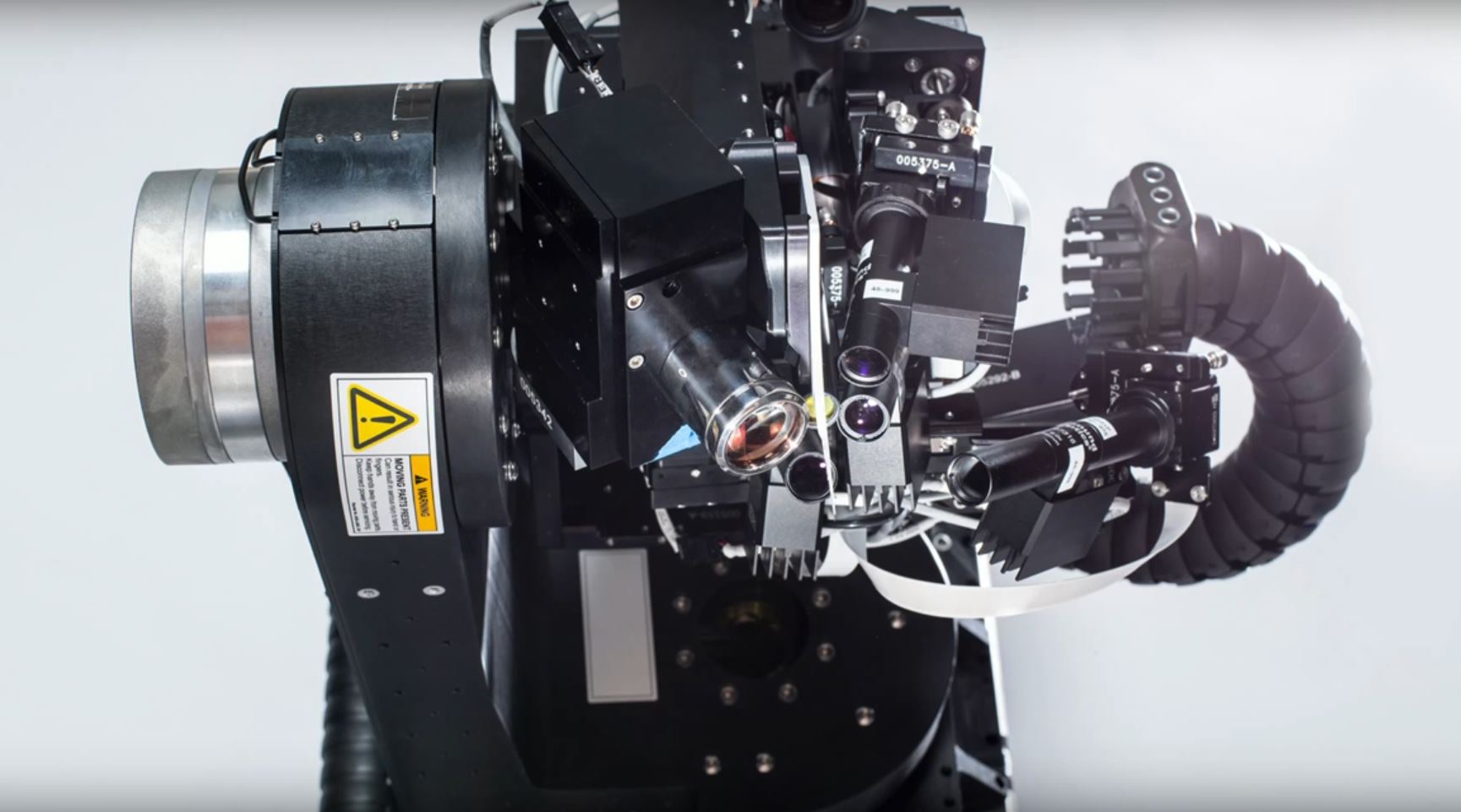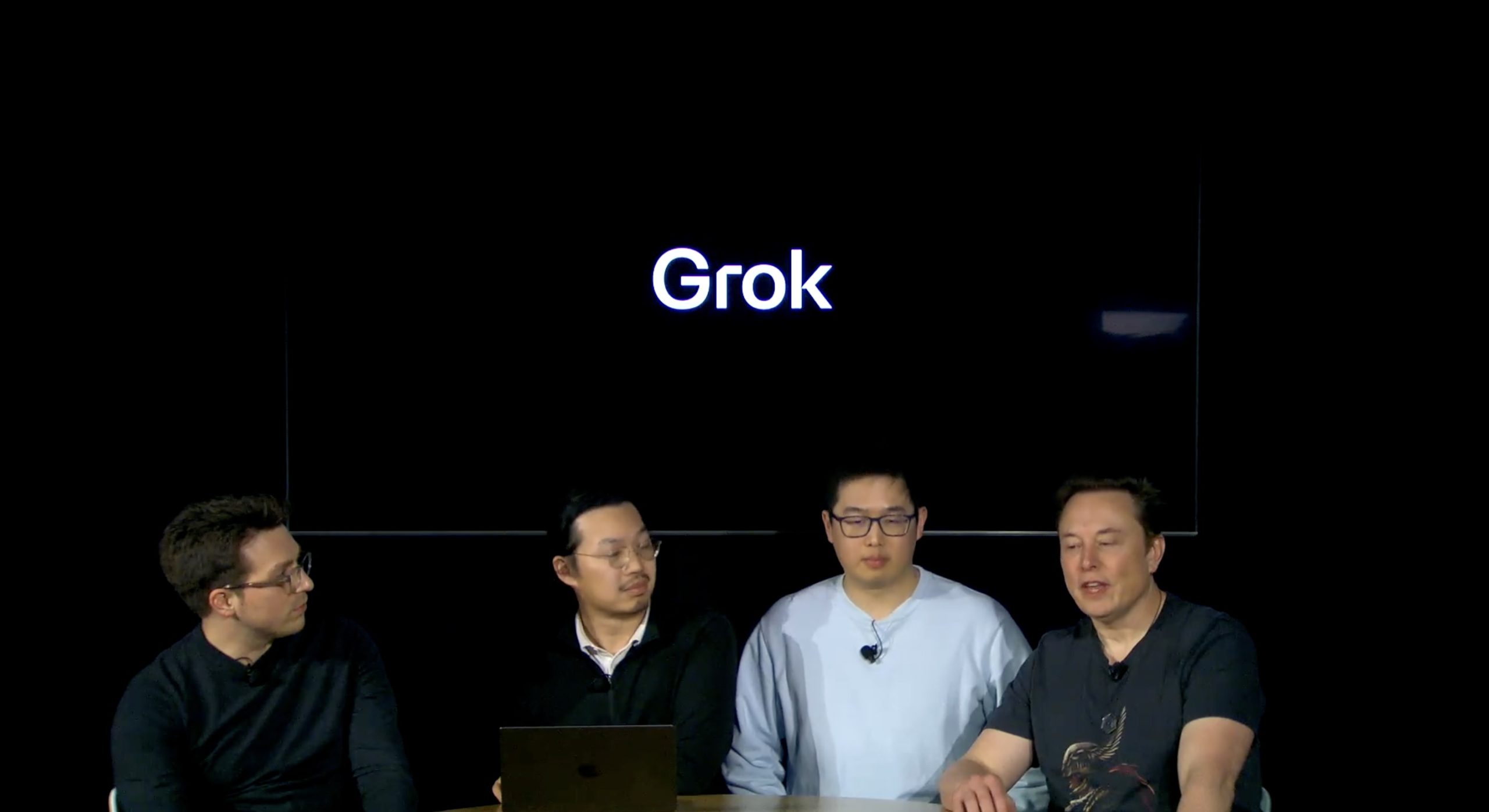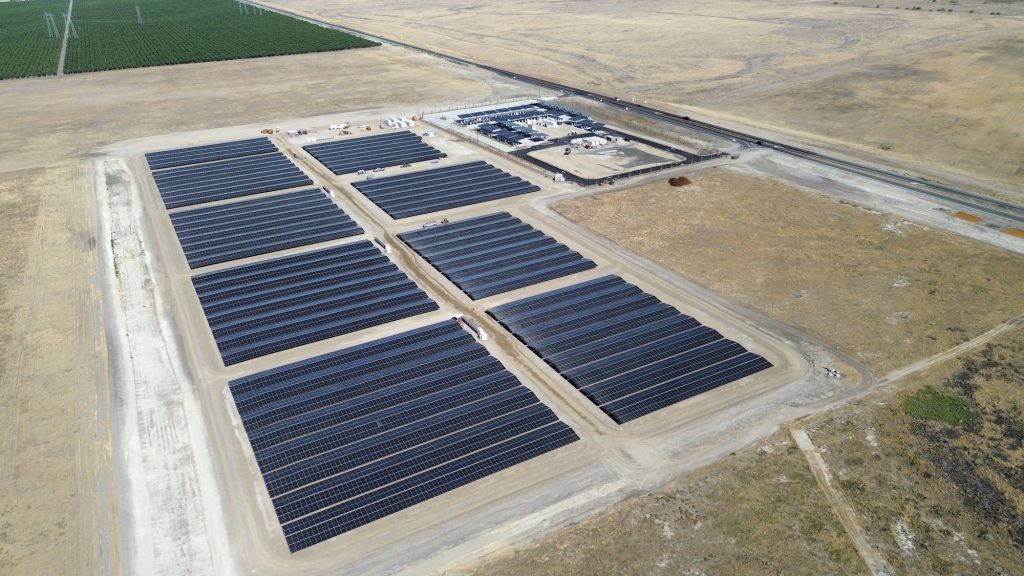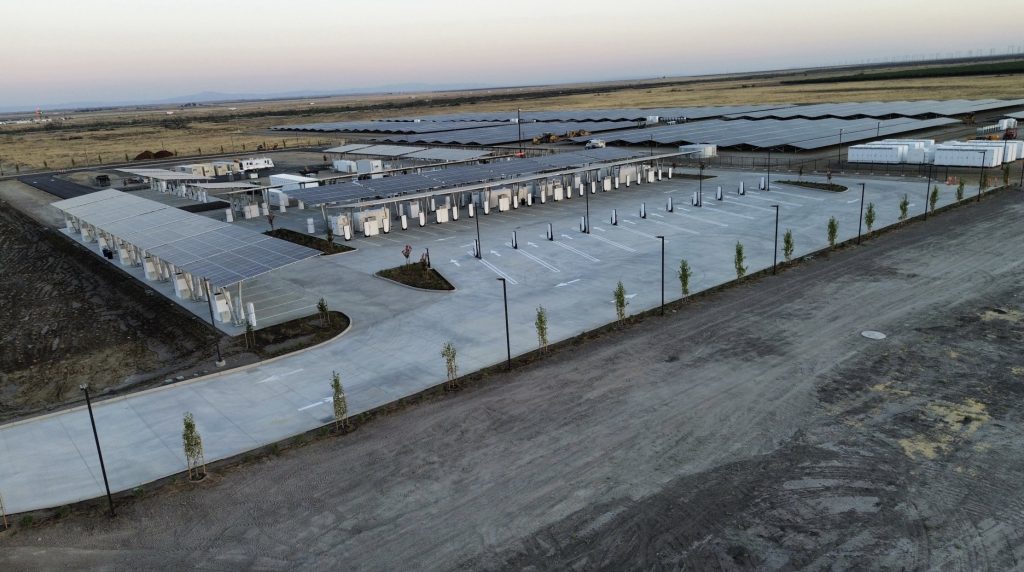

News
Elon Musk’s Neuralink brain-machine interface is turning sci-fi into reality
Besides giving the world the option to switch to Tesla emissions-free electric cars and hopes of sending humans to Mars and beyond, Elon Musk also dreams of giving humans symbiosis with artificial intelligence through an implantable brain-machine interface created by Neuralink, a company he founded in 2016.
Neuralink is working on improving the basic structures of high-density Utah Array, a tiny chip that has become the industry benchmark for recording large populations of neurons. Dr. Richard Norman from the University of Utah invented the chip in 1997, which acts as an ultra-thin, flexible, and biocompatible polymer that connects the human brain to a tiny chip. During an event last year, Neurallink explained that the implant can be placed behind the ear and can interpret brain signals. Musk’s neural tech company has also invented a robot that can sew the implant to the brain with better precision than any human surgeon.
Wait until you see the next version vs what was presented last year. It’s *awesome*.
— Elon Musk (@elonmusk) February 3, 2020
So far, the brain-machine interface by Neuralink has reportedly helped a primate communicate with a computer interface. There are plans to install a prototype this year into a human. According to Musk, they are still on track to do this.
“It will ultimately be used to make up for entire lost sections of the brain due to stroke/accident/congenital. Don’t want to get too excited, but the potential is truly transformational for restoring brain & motor functions. There is no other way to do it imo,” Musk also wrote on Twitter.
The possibilities for Neuralink’s implant are endless. The symbiosis between humans and AI will be a long shot but Neuralink’s implantable device can pave the way for medical advancements that can help people with chronic neurological problems. Possible medical uses for Neuralink’s device in the future include controlling devices, restoring sensation, and synthetic speech.
CONTROLLING DEVICES
The brain is a complex network of nerves that uses impulses to sense the outside world and to control the human body. Neuralink will use these signals and amplify them so a patient can use them to be more functional. For example, someone with paralyzed upper extremity due to a stroke can have a brain-machine interface on the center of the brain that controls movements of the arm and hands which will help patients feed, dress, and generally function on their own.
Likewise, for someone who has an amputated limb, the Neuralink brain-machine interface will be able to communicate with a robotic arm to help someone use an artificial hand to write or use a computer. It can also be perfect for someone who needs to control a robotic leg to prop one up to stand without the help of anyone.
With a smart home setup, a paralyzed person who cannot clearly or is unable to speak and move can simply command a computer to dim the lights, turn on the air conditioner, or call someone if they need urgent attention.
While it might be a very long shot, these brain-machine interfaces interacting with other future technologies can also serve as bridges to parts of the body that are medically “disconnected”. For example, a patient with spinal cord injury has severed connections between the brain and parts of their body corresponding to the level their spinal cord was injured. The Neuralink implant can play pseudo stem cells that will provide the artificial connection so one can better function. Same for someone with multiple sclerosis whose nerves basically lose the sheath that makes them transmit electrical signals optimally.
“RESTORE” SENSATION
Just like how Neuralink can be exploited to help the brain control movement of a robotic arm, it is highly possible to tap into the sensory cortex of the brain. Sensation allows better manipulation of one’s environment and should be very helpful even when using robotic arms. One can tap the signals of the brain, send it to the brain-machine implant and to the robotic hand, for example, and back. If one grabs a glass of water, it can easily control the movement through space because the patient knows its shape, weight, texture, temperature, among other factors.
The Neuralink team also aims to use the brain-machine interface to “give back” one’s vision by tapping into the visual center of the brain.
SYNTHETIC SPEECH
With its ability to tap into specific signals of the brain, Neuralink also has the potential to create synthetic speech for people who are paralyzed or those with neurological conditions that do not allow them to speak.
These are just some of the things we can see Neuralink will be used for in the future. While all these seem to be fantastical, according to Neuralink, what they’re doing is not pulled from thin air but based on decades of neurological foundation.
Ultimately, with the dream of human-AI symbiosis, as more technologies develop, the use for Neuralink’s brain-machine implant will evolve. Elon Musk mentioned before that perhaps one day, it will be used for telepathic communication between humans or perhaps even drive a Tesla. Or perhaps, in the future, one can upgrade one’s knowledge and download terabytes of information with a blink of an eye through Starlink.
Elon Musk
Elon Musk confirms Grok 4 launch on July 9 with livestream event
The rollout will be accompanied by a livestream at 8 p.m. Pacific Time.

Elon Musk has officially confirmed that Grok 4, the latest version of xAI’s large language model, will launch on July 9. The rollout will be accompanied by a livestream at 8 p.m. Pacific Time, hosted on xAI’s official account on X.
xAI goes straight to Grok 4
Back in May, leaks indicated that xAI was getting ready to ship Grok 3.5. Considering Musk’s recent comments, however, it appears that the artificial intelligence startup would be focusing on the large language model’s fourth iteration instead. As noted in a Financial Express report, users on X have sighted references to Grok 4 in the lead up to the update’s launch, such as “grok-4-prod-mimic” and “Grok 4 Code.”
Musk’s Grok 4 announcement comes as AI competition intensifies between major players including OpenAI, Google, and xAI. With Musk’s Colossus supercomputer fully operational in Memphis, xAI appears to be accelerating its AI product roadmap.
Musk pushes Grok toward political neutrality
Grok 4’s launch also follows a recent controversy involving political bias, as noted in a CNN report. Last week, Grok responded to a user on X stating that political violence in the U.S. since 2016 had come more from the political right than the left. The chatbot noted in a later reply that its answer was based on information from sources like Reuters, the Journal of Democracy, and University of Maryland studies.
Musk stated that Grok’s response was a “major fail.” “Major fail, as this is objectively false. Grok is parroting legacy media. Working on it,” he wrote in a post on X. By the end of June, Musk noted that he was “grinding all night with the xAI team” and that they were making “good progress.” He also stated that the model “Will be called Grok 4. Release just after July 4th. Needs one more big run for a specialized coding model.”
News
Tesla opens massive solar Supercharger station in California
The Supercharger opened to customers ahead of Fourth of July weekend, while Tesla continues phase two of construction on the site.

Tesla has officially launched the first several Supercharging posts at a massive station in California, notably including solar canopies and grid-scale batteries to offer completely renewable charging.
Last week, Tesla announced on X that it opened the first 84 Supercharger stalls of a planned 168-stall station in Lost Hills, California. Additionally, the massive Supercharger project features 11MW of solar canopies and 10 Megapack batteries for off-grid charging powered entirely by solar energy.
Tesla completed the first phase of the project just days ahead of the busy Fourth of July holiday weekend, adding that initial construction took just eight months. In addition to the remaining charging stalls, Tesla says it’s building a set of lounge areas, renderings of which can be seen below alongside current photos of the site.
Notably, the site also includes V4 charging posts for the company’s latest available charging speeds, and it’s located near the busy junction between I-5 and Highway 46 in Kern County.
“Thank you [Kern County] and [PG&E] for collaboration and approvals,” Tesla wrote in a follow-up post.

Credit: Tesla Charging | X

Credit: Tesla Charging | X

Credit: Tesla Charging | X

Credit: Tesla Charging | X
Tesla Supercharger Maps for North America, Europe, and Asia pic.twitter.com/0U5r0XRPyo
— TESLARATI (@Teslarati) July 2, 2025
READ MORE ON TESLA SUPERCHARGERS: Tesla launches ultra-fast V4 Superchargers in China for the first time
Testing at the LA Diner, plus Musk update on potential Tesla solar Gigafactory
The huge Tesla Supercharger station completed phase one of construction fairly quickly, especially given how long Tesla has been working on its unique Los Angeles diner, drive-in, and Supercharger location. Still, the company was seen performing some testing at the nearly-completed charging station earlier this month, and will reportedly be holding a job fair.
Elon Musk also responded on Monday morning to a post on X, suggesting that Tesla is “thinking about” building a U.S.-based solar Gigafactory in order to help support increased power needs with AI growth, and to bolster domestic solar production.
Tesla is building a new UFO-inspired Supercharger in the heart of Alien country
News
Tesla driver walks away from major accident with minor injuries
The driver sustained only minor injuries, and the exact cause of the crash remains under investigation.

The driver of a Tesla Model Y survived and walked away from a harrowing accident on Monday in California, only sustaining minor injuries despite the vehicle being impaled by a guardrail.
On Monday morning around 4:34 a.m., the Los Banos division of the California Highway Patrol (CHP) responded to the accident on I-5 near Panoche Road, involving a 23-year-old in a Tesla Model Y. According to a post on social media, the driver veered off the road for unknown reasons in the northbound lane, before crashing directly into the guardrail and impaling the vehicle.
You can read the full message and photos from Los Banos CHP below, as were shared in a Facebook post on Monday afternoon.
This morning a Tesla model y was traveling in the #1 northbound lane of I-5 north of Panoche Rd. For unknown reasons driver allowed V-1 to veer off the roadway, travel through a dirt center divide, and crashed into the fixed metal guardrail. Lucky for the driver he only sustained minor injuries and was able to walk away. Driving a vehicle requires 100% attention to the road. Avoid distractions and focus on driving.

Credit: CHP Los Banos (via Facebook)

Credit: CHP Los Banos (via Facebook)

Credit: CHP Los Banos (via Facebook)
In a statement to SFGate, CHP officer Myles Anderson said that the driver only sustained minor injuries, while no arrests are made and drugs and alcohol are not suspected to have been involved. The report also notes that Tesla’s “cruise control and lane assistance features” were activated, according to Anderson. However, it’s not entirely clear if this is referring to Supervised Full Self-Driving (FSD), or to the cruise control and lane assist features baked into Autopilot.
At the time of writing, CHP has not yet responded to Teslarati’s request for clarification and additional details on the matter.
Tesla Crash Safety Ratings across its lineup: pic.twitter.com/ny30R7ceji
— TESLARATI (@Teslarati) July 1, 2025
READ MORE ON TESLA SAFETY: Tesla rolls out crucial new safety feature aimed at saving children
The news comes after Tesla has touted its vehicles as incredibly safe for many years. In December, for example, the company highlighted receiving top safety scores from regulators on four different continents throughout the world, including from the National Highway Traffic Safety Administration (NHTSA) and the Insurance Institute of Highway Safety (IIHS) in the U.S.
Tesla has also listed the goal of making its vehicles the safest on the road throughout the years, both in the overall design of its vehicles and in its Autopilot and Full Self-Driving (FSD) programs.
Tesla Model 3 ranks as the safest new car in Europe for 2025, per Euro NCAP tests
-

 Elon Musk1 week ago
Elon Musk1 week agoTesla investors will be shocked by Jim Cramer’s latest assessment
-

 News2 weeks ago
News2 weeks agoTesla Robotaxi’s biggest challenge seems to be this one thing
-

 News2 weeks ago
News2 weeks agoWatch the first true Tesla Robotaxi intervention by safety monitor
-

 Elon Musk2 weeks ago
Elon Musk2 weeks agoA Tesla just delivered itself to a customer autonomously, Elon Musk confirms
-

 News2 weeks ago
News2 weeks agoTesla Robotaxi rollout proves that Elon Musk still delivers, even if it’s late
-

 Elon Musk2 weeks ago
Elon Musk2 weeks agoxAI welcomes Memphis pollution results, environmental groups push back
-

 Elon Musk2 weeks ago
Elon Musk2 weeks agoElon Musk commends Tesla team on successful Robotaxi launch
-

 Elon Musk2 weeks ago
Elon Musk2 weeks agoElon Musk confirms Tesla Optimus V3 already uses Grok voice AI

















